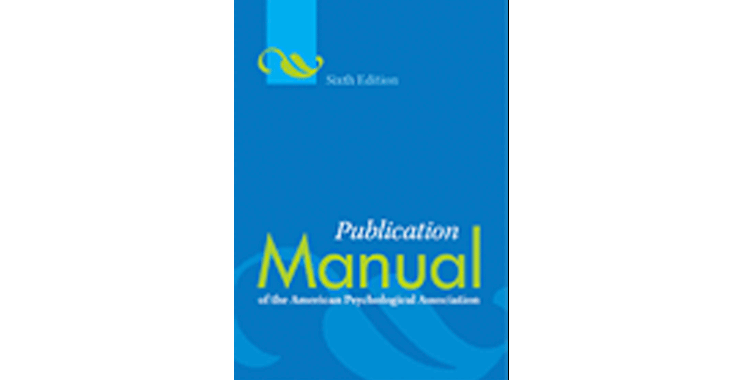
With each new edition of the Publication Manual there is a transition period, in which authors continue to submit journal articles and students continue to write papers in the previous edition’s style. We recommend that editors and instructors make the switch and adopt the seventh edition Publication Manual in January 2020 or thereafter.
In the meantime, we’ve archived the sixth edition APA Style blog, frequently asked questions pages, and other resources here. These will be available until further notice.

The sixth edition APA Style blog was launched in June 2009, on the same day that the sixth edition of the Publication Manual was published. In the 10 years that the blog was active, we discussed all aspects of APA Style, and we answered thousands of questions (in nearly 5,000 comments).
Those original posts and comment conversations are still available in an archive.
We will keep this archive available until further notice.
The Basics of Sixth Edition APA Style ®
This tutorial is designed for those who have no previous knowledge of sixth edition APA Style.Sixth Edition APA Style Online Course
This online course is intended to help students learn how to apply basic guidelines of sixth edition APA Style in writing term papers, research reports, and journal articles.
These sample papers illustrate various elements of sixth edition APA Style.
Sample Paper: One-Experiment Paper
Sample Paper: Two-Experiment Paper
Frequently Asked Questions About Sixth Edition APA Style ®
Find answers to frequently asked questions from authors, editors, and students writing papers in sixth edition APA Style.
Find answers to common questions about running heads, margins, heading levels, lists, tables, figures, tables of contents, title pages, serial commas, and quotations in sixth edition APA Style.
Find sixth edition APA Style guidelines on (a) citing websites, ebooks, interviews, Facebook, Twitter, and videos (e.g., YouTube) and (b) formatting DOIs, in-text citations, and reference lists.